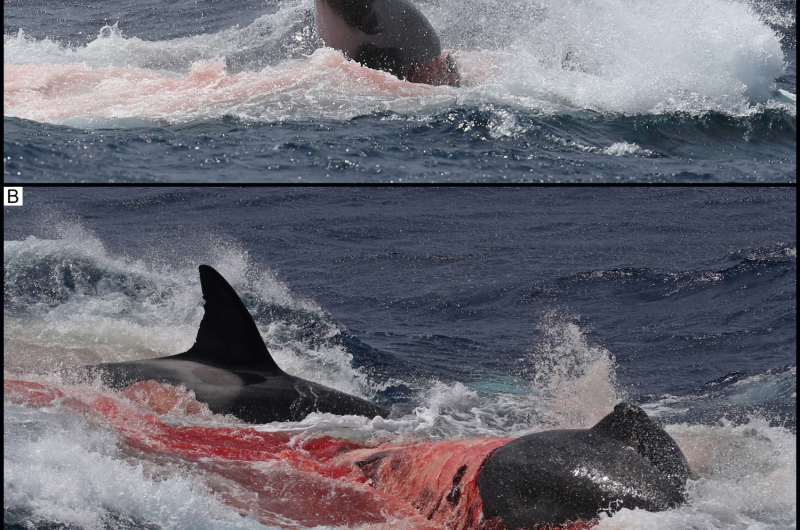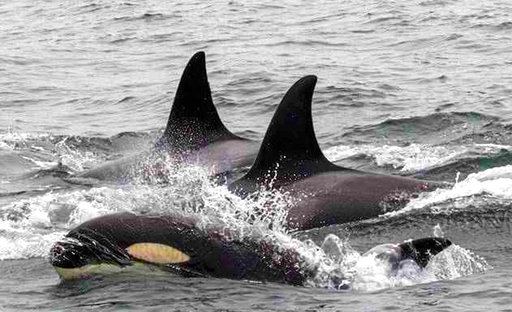
Two unrelated and rare instances of orcas killing and eating other ocean creatures has been witnessed and documented—one off the coast of California, the other off the coast of Australia. In one incident, the action was caught by a drone pilot out for a day of fun—he captured video of an orca killing a sevengill shark that was subsequently passed around for consumption by several other orcas. In the second, a team of researchers studying orcas off Australia’s southern coast reported observing orcas capturing and killing beaked whales on four occasions. They have published their findings in a paper they have uploaded to the open access site PLOS ONE.
Despite their notoriety among the human population, scientists still do not really know a lot about orcas, aka killer whales, particularly those in small groups, such as those that live in the waters around Australia. Scientists have categorized orcas (members of the dolphin family) into three main groups based on where they live: offshore, transient and resident. Offshore orcas are generally the smallest, living, as their name implies, relatively close to a shoreline and congregating in large groups—but they have not been well studied. Both of the recent rare feeding incidents involved offshore orcas, which is likely why their activities were considered surprising. The whale killing was the first of its kind ever recorded. It is not known if that is because humans have not been around to see it happen before or if the orcas were changing habits due to a changing environment. Killing whales is not easy for orcas, the researchers report; they chased their prey for two or more hours to tire it out before drowning and then skinning it.

The shark attack was captured by a camera aboard a drone piloted by Slater Moore—it involved two adult females and two calves. Moore was out on a sightseeing boat when he launched his drone and captured the action a short distance away—he told reporters he believed the shark was approximately five feet in length. Few such examples of hunting and feeding have been reported with orcas because they usually carry out such activities underwater. Some have speculated that the reason the shark attack happened on and near the surface was because the adults were trying to teach their young how to hunt.










